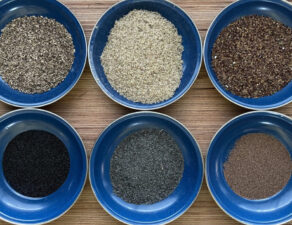
Photo credits: Cydney Ross
By Cydney Ross
When you’re outdoors this fall you may notice weird growths on plants. From stems to leaves, these lumps and bumps are apparent this time of year. I have vivid memories of smooth bumps on the leaves of pin oaks in my front yard as a kid. When we gathered piles of leaves to jump in (and unfortunately bag up), I looked for the bumpiest leaves and imagined who was living inside. Later I’d learn these forms are called “galls” and there are indeed tiny creatures inside. Galls are insect architecture that come in various shapes, colors, and sizes. Though odd in appearance, they’re a natural phenomenon and have their place in our ecosystem and culture!
Galls are specialized plant tissues that house insect larva. Tiny adult wasps, moths, and flies will lay their eggs into buds, stems, and leaves. Along with the eggs a hormone is released that encourages plants to grow these unique structures. These forms have evolved for millennia as they adapt to predation from other insects and birds. Though not technically a symbiotic relationship with plants, galls usually don’t cause harm. Instead, they’re a home for larvae which are a critical source of food for birds, especially during harsh winter months.
When seeds and berries become scarce, these packaged meals provide crucial nutrition for birds in winter. Two of the most common galls seen on Goldenrods (Solidago species) are the Goldenrod Elliptical-Gall Moth and Goldenrod Gall Fly. I’ve observed downy woodpeckers feeding on the larvae inside these galls in the middle of winter. According to The Cornell Lab of Ornithology, one pair of breeding black-capped chickadees require 6,000-9,000 soft-bodied insects to raise one clutch of young. That fact alone provides thousands of reasons to leave the leaves in your backyard this year!
Another interesting fact about galls is their cultural significance. Various species of oak apple gall have been used for centuries to create ink for writing and art making. Ground up galls soaked in water are full of tannins. When combined with iron sulfate it creates an ink that binds to paper quite well. From the Dead Sea Scrolls, Leonardo Da Vinci’s sketchbooks, to the Magna Carta and the United States’ Declaration of Independence – these historical documents were penned using oak gall ink. Pretty cool, huh? When you’re hiking in the woods this fall, see if you can find the galls featured in this article.







